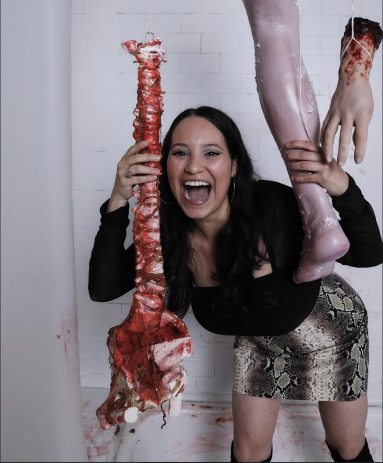20 Horror Movies That Perfectly Capture Girlhood
“Hell is a teenage girl.” —Jennifer’s Body
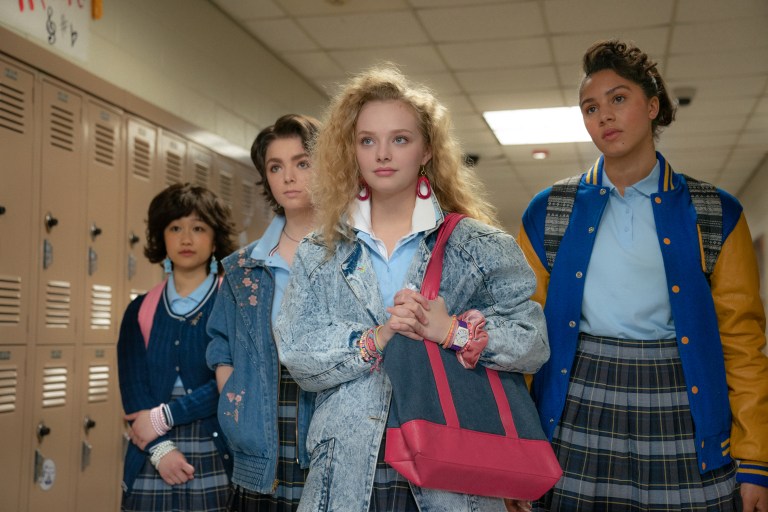
Teen girls have long been at the center of horror cinema, where they’ve come face to face with unfathomable evil and fought like hell to save themselves. In John Carpenter’s Halloween (1978), Laurie Strode (Jamie Lee Curtis) is terrorized by the masked Michael Myers (Nick Castle) and almost dies, but survives to live with unspeakable trauma. A Nightmare on Elm Street (1984) sees Nancy Thompson (Heather Lankgenkamp) determined to put an end to Freddy Kreuger (Robert Englund) and facing him head-on. In the end, she defeats him by choosing to get over her fear. Beyond the “final girl” and the bloodbath, there has been an emergence of films in the genre that deal with the horrors that come with girlhood. It’s all thanks to Brian de Palma, whose adaptation of Stephen King’s novel cinematically pioneered coming-of-age as horror. Carrie (1976) also laid down the groundwork for the blood-soaked teenage girl coming into her own, protagonists seen in films like Ginger Snaps, Jennifer’s Body, and Raw.
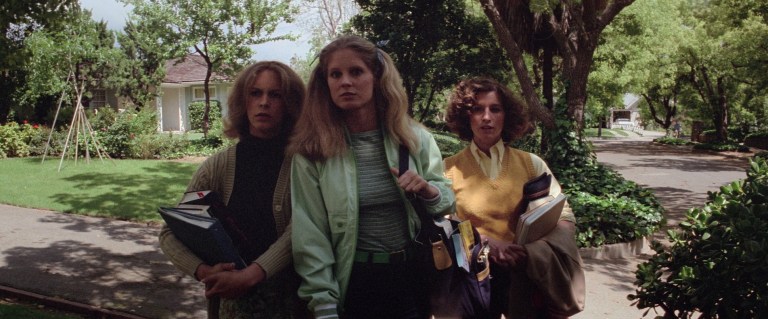
This niche of horror films focus on puberty, sexuality, and identity. Often, it deals with the transformation of the body, which reflects the character’s evolution of her inner self. Through compelling stories, these movies capture the experience of girlhood and the beauty and heartbreak that comes with growing up. Instead of painting the female as the victim and the survivor, as is the norm, they emphasize the complexity and multifaceted nature of being a girl and a woman. Sometimes, she’s the very thing to be feared. Credit is due to the titles on this list for painting a more realistic, flawed, and complex feminine portrayal. Their underlying theme of female empowerment should also be recognized. However, it should be noted that there is more work to be done, as more stories depicting girlhood are needed that are told through a BIPOC and trans lens.
Curated below are 20 horror films that perfectly capture girlhood and that will resonate with every woman who has known the growing pains of coming of age. (The first few films have spoilers after each synopsis, so be careful if you’re a less seasoned horror fan.)
The Picnic at Hanging Rock (1975)
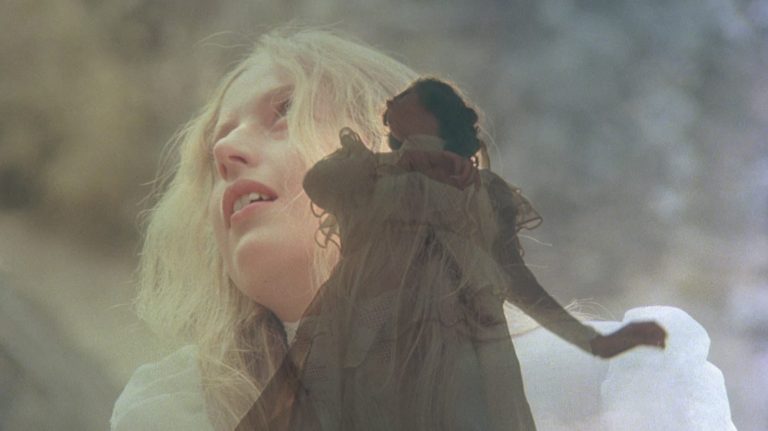
“Only a million years ago. Quite a recent eruption really. The rocks all round – Mount Macedon itself – must be all of 350 million years old. Siliceous lava, forced up from deep down below. Soda trachytes extruded in a highly viscous state, building the steep sided mamelons we see in Hanging Rock. And quite young geologically speaking. Barely a million years.”
The mystery Picnic at Hanging Rock is not technically a “horror,” but it’s one of the most unnerving films ever created, inspiring profound terror. Set in 1900, it follows the events after a group of girls at a boarding school mysteriously vanish following a picnic at scenic Hanging Rock, where three of them ventured off to explore its maze-like tunnels.
When the audience first meets the girls at Appleyard College, we get a glimpse at the details of their private lives—Miranda waking up, their personal belongings, Irma washing her face in her undergarments, whispered secrets, Valentine’s cards, girls brushing their hair and pressing flowers. The schoolgirls tighten each other’s corsets, and Appleyard College is instantly established as a place where they have to keep their emotional awakening and burgeoning sexuality repressed, as opposed to the unruly land surrounding Hanging Rock, where they lose the gloves, feel free to muse, relax, and get their frilly white dresses dirty. The opening shots are invasive, and after capturing the girls bursting with excitement about love and the world around them, one would assume to know who these young women are. Then, the three who explore the Rock disappear and only one is ever found, and the film refuses any explanation whatsoever. They become lost in the insatiable curiosity of their youth, and suddenly the girls become elusive and unknowable. Their girlhood is painted as something foreign and supernatural, evoking fear and discomfort, much like in real life. Viewers get a peek at their thoughts and desires, and then are left with nothing but questions—an allegory for the unsolvable teenage girl. When Irma comes back, the girls attack her, demanding to know what she knows—the secrets that come with becoming a woman, one might say, or perhaps something deeper. Whatever the mysteries, Miranda’s echoed image at the end refuses to give any answers, as she turns away from the camera towards Hanging Rock.
Carrie (1976)
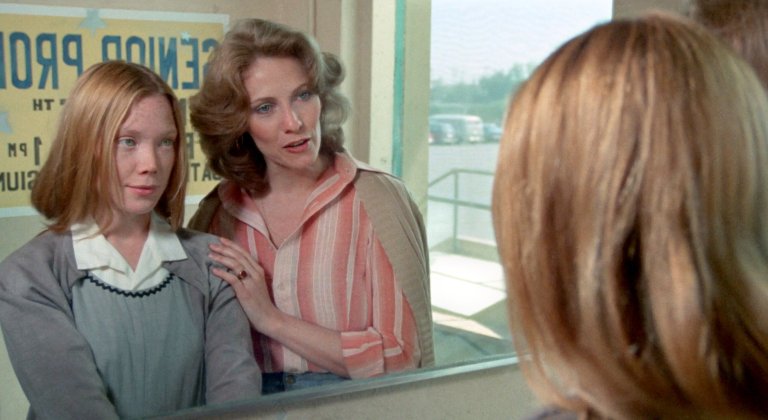
“I wanna be normal. I wanna start to try and be a whole person before it’s too late for me!”
Carrie is a story about being a girl in a world that only knows how to be cruel and unkind. Sissy Spacek stars as the titular character, a shy teenage girl sheltered by her religious mother and bullied by her peers, who unleashes her telekinetic powers.
Carrie’s telekinesis wasn’t evil, but a special power that helped her gain control in her life for the first time. It gave her the strength to express her desire to explore a normal life and rebel against her fanatically religious, abusive mother. Carrie was always silenced and never learned to properly process and convey her feelings. Mrs. White would lock her in the prayer closet, instead of having any real conversation with her daughter—an all too familiar pain for many girls growing up. Carrie’s power is also a manifestation of her repressed trauma, caused by the brutal treatment she received from both her mom and classmates. The film’s opening sequence captures the depth of callousness that teenage girls are capable of. Instead of extending sisterhood and helping her understand what’s happening to her body, they throw pads and tampons at a fearful Carrie and scream “plug it up.” Carrie isn’t welcomed into the fold after her “rite of passage,” but further ostracized. All Carrie ever wanted was what every teenage girl wants—to belong and be loved and accepted. Even if only for a night, she’s “one of them”—she does her makeup, curls her hair, wears a pink flowy dress, dances, and even kisses a boy. The only time Carrie looks happy is the brief moment she’s being crowned, before she’s covered in pig blood. After enacting her revenge, she goes to her mom for comfort, and the one person who’s supposed to protect her literally stabs her in the back. In girlhood, it’s often our mothers who first break our heart, and Carrie’s mom did it time and time again.
The Craft (1996)
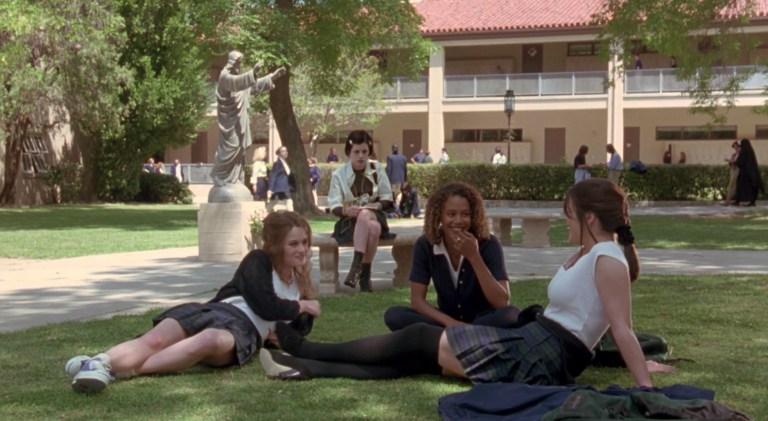
“I disagreed with them once and they turned their backs on me. That’s not friendship.”
Sarah (Robin Tunney) just moved from San Francisco and is new to her Los Angeles Catholic prep high school, where she meets outcasts Rochelle (Rachel True), Nancy (Fairuza Balk), and Bonnie (Neve Campbell). She’s the fourth member that the girls have been waiting on for their coven. After conjuring up various spells, they begin to grow mad with power.
The Craft is a film most millennial girls obsessed over during their childhood and teenage years. It was played during sleepovers, before games of “light as a feather, stiff as a board.” Many of us tried replicating the outfits, dark 90s glamor, rebellious attitudes, and even magic. The movie continues to resonate with many because it’s a rich portrayal of teen girl angst, namely the desire for control during those formative years. The cult classic also masterfully explores all-consuming friendships that turn us into the worst version of ourselves and what happens when girls turn on each other in a world where patriarchy is their true adversary. The movie undoubtedly had its faults on and off screen, such as Nancy’s ending, Sarah feeling guilty about the death of her would-be rapist and most notably, the talented Rachel True struggling with racism during production and publicity. In some ways, however, its story was ahead of its time. It tackled issues like suicide, depression, rape, consent, slut-shaming, (ironically) race, and intersectional feminism at a time these issues weren’t typically depicted cinematically. The film, which uses witches as a metaphor for female empowerment, accurately represented a new type of girlhood, one in which teenage girls could grasp what was once unattainable—autonomy and power. It made us feel like the most confident version of ourselves, and paved the way for many cult classic feminist horror films centered around “strange” and “misfit” women, like Ginger Snaps (2000).
Ginger Snaps (2000)
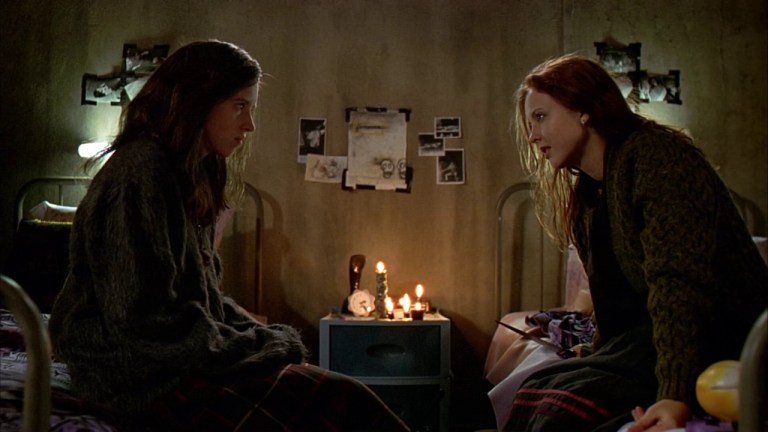
“I get this ache… And I, I thought it was for sex, but it’s to tear everything to fucking pieces.”
The movie focuses on two outcast sisters living in the dull town of Bailey Downs, Ginger (Katharine Isabelle) and Brigitte Fitzgerald (Emily Perkins). On the night of Ginger’s first period, she’s bitten by a werewolf. Soon she begins a horrifying transformation, and it’s up to her sister to save her—and everybody else.
At its core, Ginger’s story encompasses the horror of girlhood and growing up. Her lycanthropy is a metaphor for puberty and menstruation. With the physical changes in her body come ache, fear, aggression, mood swings, and sexual hunger. Once Ginger learns how to accept her transformation, she is more self-assured and confident, and embraces her sexuality. Gone are the layered sweaters and long maxi skirts. She starts wearing outfits that are more flattering and accentuate her body. Even the way she walks and carries herself is different. Of course, the boys notice. The film emphasizes how uncomfortable it is for a teenage girl to practice self-expression without being sexualized by the leering eyes of males, but Ginger’s change isn’t just physical. Digging deeper, her lycanthropy is also a representation of her monstrous feminine—the things lurking within women that patriarchal society fears. Ginger is a wild force that cannot be contained. She dominates the first boy she has sex with. She’s a sexually liberated woman deemed dangerous because she doesn’t conform to social norms. Her bloodlust and monstrosity are connected to her desire for power and autonomy. What teenage girl hasn’t craved those things? In the end, she’s punished for her empowerment and succumbing to her urges. Brigitte, who portrays a softer and more innocent femininity, remains the final girl. In girlhood, we’re taught that the world doesn’t have space for ardent women like Ginger—that we have to remain compliant under patriarchal oppression and that we can’t ache for anything bigger than what this narrow-minded world has to offer us.
Jennifer’s Body (2009)
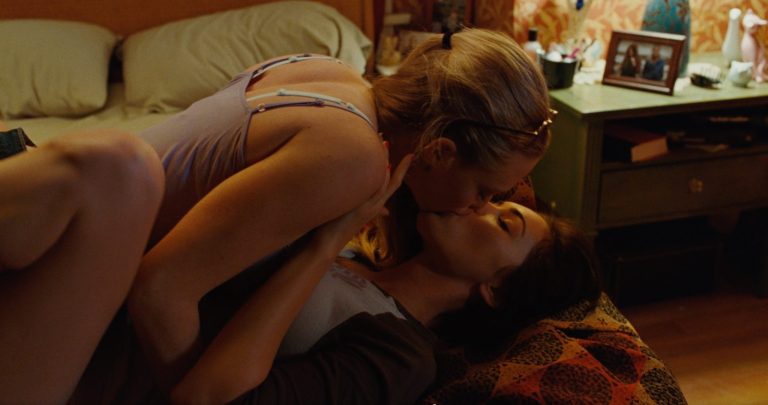
“They’re just boys, just morsels. We have all the power, don’t you know that?”
High school cheerleader Jennifer Check (Megan Fox) turns into a succubus who must survive on the flesh of teenage boys. Her horrified best friend Needy (Amanda Seyfried) struggles with her love for her and knowing she must be stopped.
Like Ginger Snaps, Jennifer’s Body is a story about a girl who takes ownership of her sexuality and one that examines sisterhood, in this case the film explores the imbalanced power dynamics of a codependent friendship. Jennifer is the more assertive and confident of the two—a teenage girl well aware that her sexuality is a weapon and a source of empowerment. Needy is more of a straight-laced “good girl,” who doesn’t learn how to stand up for herself until her best friend turns into a succubus. The horror of this film begins with its title—it’s all about Jennifer’s body. Jennifer losing her humanity is representative of the objectification and dehumanization girls and women face in patriarchal society. At the moment of her sacrifice, which serves as a metaphorical sexual assault, Jennifer turns from a teenage girl into just a body. Even before being slaughtered by the band Low Shoulder, her self-perception is that which society has conditioned her to have—that she can only be interesting because of what her body has to offer. When she gets a bad feeling in the van, she lies and proclaims she’s a virgin, assuming men want experienced girls, because she hasn’t yet grown up enough to understand that men are actually afraid of liberated women who have come into possession of experience in the world. They prefer naive girls they can easily manipulate, but they certainly don’t discriminate when it comes to using us for their benefit. Jennifer lost her life learning what we all do during our teenage years, which is that men see us as objects for their consumption.
Hatching (2022)
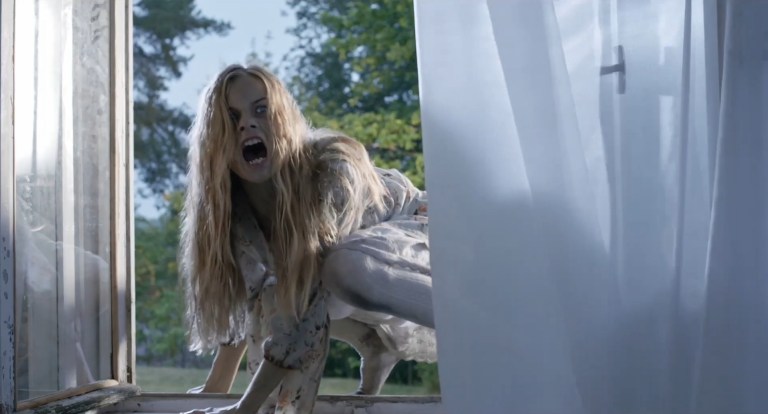
“Do you know the best way to get rid of the stress?…Winning the competition. Show everybody you’re the best, right?…When you win you don’t have to worry about anything.”
This Finnish psychological body horror that tells the story of 12-year-old Tinja (Siiri Solalinna), a gymnast who lives desperately trying to please her image-obsessed demanding mother (Sophia Heikkilä). After Tinja comes across a strange egg, she keeps it warm, and what hatches is something strange and terrifying.
Hatching encapsulates what it’s like to be a young girl who yearns for nothing more than her mother’s approval. Tragically, it’s a film that hits home for many women who spent their girlhood carrying the weight of the expectations set by a domineering mother. Tinja’s mom only sees her daughter as an extension of herself. Tinja would do everything and anything to gain her mom’s acceptance and affection, but nothing is ever enough. She doesn’t know what it’s like to be a carefree kid who does anything just for fun, so determined to excel and not let her mother down. What Tinja wants and is passionate about doesn’t matter to either of them—she’s not even sure if she likes gymnastics. One can’t help but wonder if Tinja’s mom also has a mother wound, and if through her daughter, she’s trying to get the validation her own mother never gave her. The creature who hatches becomes a vessel for Tinja to release every emotion her mother denies her—rage, sadness, anger, fear. In the end, Tinja is accidentally killed by her mother, but it’s a murder she had been metaphorically committing all of Tinja’s life—forcing her to deny and suppress herself. Tinja died so the creature could complete its metamorphosis. The creature’s nature is left ambiguous, though either answer is equally chilling—whether it’s one molded by years of self-hatred and her mother’s disturbances and insecurities, or the perfect creature her mother always wanted her to be.
More movies that perfectly capture girlhood (no spoilers here)…
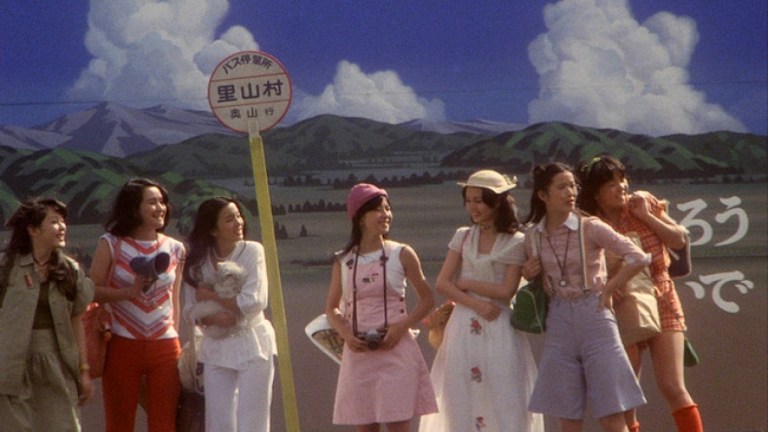
House (1977) Hausu is a Japanese film that deals with the transition from innocence into adulthood. It’s one of the most unforgettable and surreal cinematic experiences that can only be described as a psychedelic ghost story. The story follows a girl and her six friends as they visit her aunt’s remote mansion, where they encounter supernatural events—and get picked off one by one.
“I’m scared! It’s like a horror movie!”
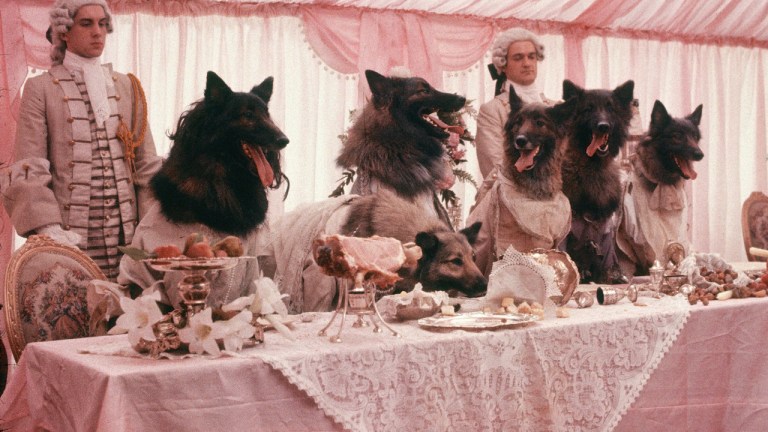
The Company of Wolves (1984) This horror anthology sees young Rosaleen (Sarah Patterson) in the present day asleep and dreaming that she and her family live in an 18th century village near a dark forest, where a wolf is terrorizing the townspeople. In her dream, her grandmother tells her supernatural tales of werewolves and menacing men. The movie is rich in symbolism revolving around gender, religion, sexuality (and the power therein).
“Little girls, this seems to say / Never stop upon your way / Never trust a stranger friend / No-one knows how it will end / As you’re pretty, so be wise / Wolves may lurk in every guise / Now as then, ’tis simple truth / Sweetest tongue has sharpest tooth.”
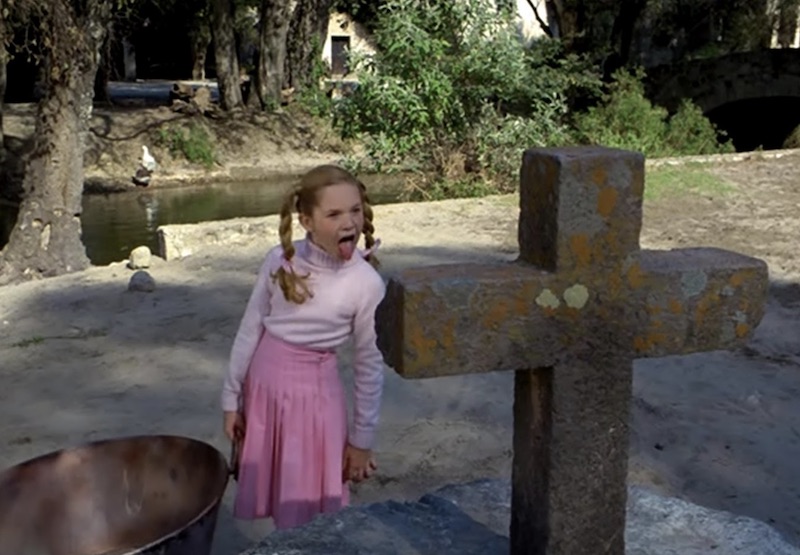
Poison for the Fairies (1986) This Mexican horror film was written and directed by legendary filmmaker Carlos Enrique Taboada. Set in the 1960s, it follows a lonely and impressionable 10-year-old girl who falls under the influence of a power-hungry classmate who has aspirations of being a witch. The movie features no adult faces and is shot from the height of a child, giving an emphasis to the children’s view. Poison for the Fairies explores the blurring of fantasy and reality that we have as children, toxic friendship, jealousy, and naivety.
“Witches have to be bad. I want to be the baddest of all.”

Twin Peaks: Fire Walk With Me (1992) The movie serves as a prequel to the TV series Twin Peaks (1990-1991), which centered around Laura Palmer’s murder (Sheryl Lee), who became an undying archetype of teenage girlhood—an experience filled with as much anguish as Laura’s life and death. It follows her life before her tragic demise, exploring trauma, abuse, self-hatred, and the theft of innocence.
“When this kind of fire starts, it is very hard to put out. The tender boughs of innocence burn first, and the wind rises, and then all goodness is in jeopardy.”
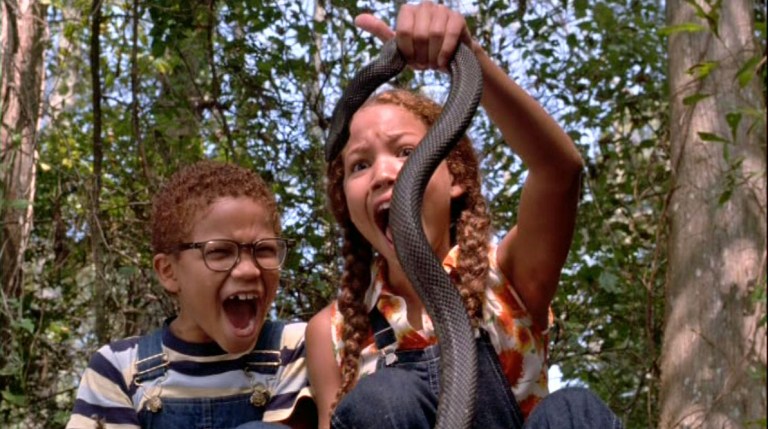
Eve’s Bayou (1997) This Southern gothic drama follows the Batistes, a seemingly picture-perfect family in rural Louisiana. It’s told through the eyes of the youngest daughter, Eve (Jurnee Smollett), using her recollection of memories of the summer of 1962. Beneath their idyllic facade, lies a plethora of family secrets and traumas. Eve’s Bayou is for Black girls who spent their girlhood growing up too fast. The complex film explores budding womanhood, gender roles, sexual violence, and memory.
“Memory is a selection of images, some elusive, others printed indelibly on the brain.”
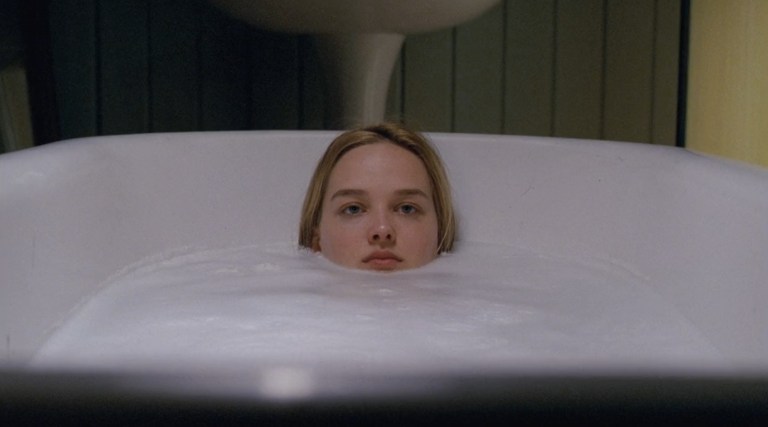
Teeth (2007) Dawn (Jess Weixler), an active member of her high school chastity club, is still a stranger to her own body when she begins struggling with her burgeoning sexuality and desires. After being met with male violence, she discovers a physical advantage against those who try to hurt her. The movie examines female oppression, sexual agency, purity culture, and the unwanted sexual attention girls experience as they enter womanhood.
“The toothed vagina appears in the mythology of many and diverse cultures all over the world. In these myths, the story is always the same. The hero must do battle with the woman, the toothed creature, and break her power.”
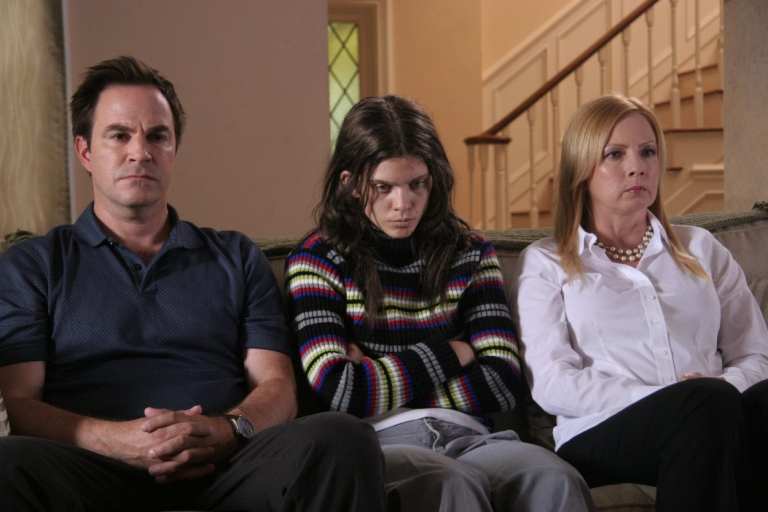
Excision (2012) Pauline (AnnaLynne McCord) is a strange girl who has intense psychosexual fantasies and unhealthy surgical obsessions. She struggles to fit in with her family and classmates. Her own mother acts repulsed by the behavior of her delusional daughter. The movie builds upon a sense of impending doom that culminates in a disturbing and shocking final scene. It examines the lengths teenage girls will go to in order to win their mother’s love and approval.
“Solely based on the definition, I don’t know a teenager that doesn’t profile as a sociopath.”
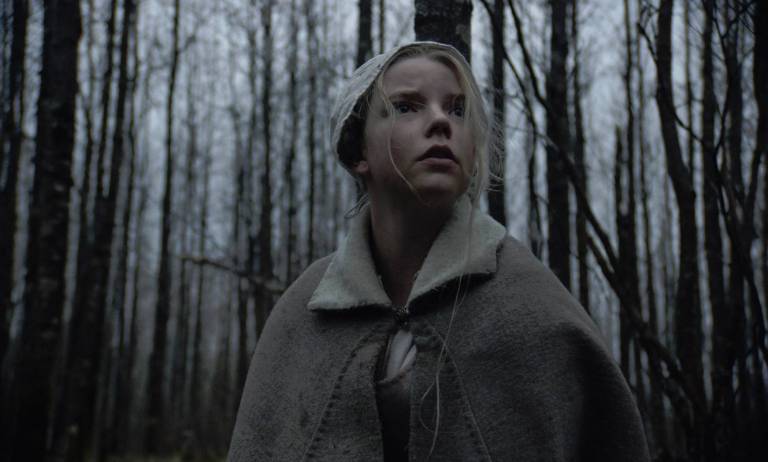
The Witch (2015) Set in 1630s New England, the story follows Thomasin (Anya Taylor-Joy) and her family, who have been banished from their Puritan settlement. They build a farm near a dark, secluded forest, where an unsettling evil begins terrorizing them. Thomasin faces the brunt of the blame for the family’s increasing tragedy and misfortune. The movie is a story about a young woman finding her place in the world. It explores repression, patriarchal power, female freedom, and religion.
“Wouldst thou like the taste of butter? A pretty dress? Wouldst thou like to live deliciously?”

Raw (2016) This French film follows a young freshman vegetarian who is forced to consume raw meat during a hazing ritual at her veterinary school. Afterwards, she develops a desire for human flesh. Raw is a story about sexual awakening and feminine pleasure, framing the subjects as a possession of power. The movie also explores pent-up girlhood rage and the bond between two sisters.
“Your mum was tough at first. Kept saying I was her best friend at school. It drove me nuts! It’s not like she had a boyfriend. Just me. And then we had our first kiss. And I understood…”

Pyewacket (2017) Leah (Nicole Muñoz), who has recently lost her father, struggles with a strained relationship with her mother that gets worse when she’s forced to move away from her home and friends to a secluded house in the woods. In a moment of uncontrollable rage, she turns to the occult to summon a demon to kill her mom. Pyewacket explores teenage rebellion, angst in girlhood, loss, and the regrettable mistakes we make in moments of anger.
“You wanted to kill your own fucking mother! I’m just saying that if it worked, then maybe you deserve it!”

Blue My Mind (2017) This movie from Switzerland follows 15-year-old Mia (Luna Wedler). As she tries to fit in with the girls at her new school, her body undergoes a horrifying transformation that brings her whole life and existence into question. Blue My Mind captures a disturbing but realistic portrayal of girlhood—one filled with peer pressure, confusion, puberty, drinking and drugs, and joyless promiscuity. The movie also explores themes like identity, the loss of innocence, the need for autonomy, and the lengths teenage girls go to for acceptance.
“Is it different than you expected? Did it catch you by surprise?”
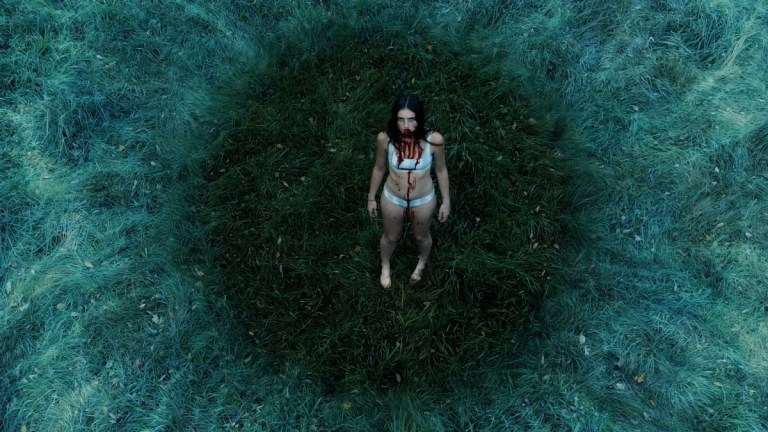
Hellbender (2021) This is a coming-of-age story about a girl who breaks through her mother’s boundaries and awakens hungry powers within herself. 16-year-old Izzy (Zelda Adams) lives in the woods with her protective mother and isn’t allowed to venture out due to health problems. She spends her time making metal music with her mom and enjoying nature. When she ventures out to the edge of the woods, she meets people her own age. Soon she discovers a dark family secret, and the reason she’s been kept secluded her whole life.
“If they want to believe in hell so badly, I’ll give ‘em hell.”
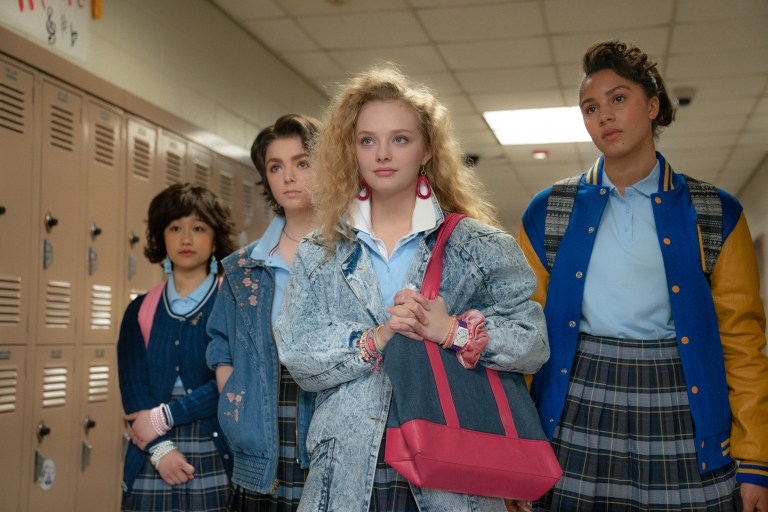
My Best Friend’s Exorcism (2022) Abby (Elsie Fisher) and Gretchen (Amiah Miller), two teenage girls living in 1988, attend a sleepover at a lake house, where they play with a Ouija board. When they come back home, Gretchen starts acting strange and unlike herself. Abby becomes convinced she’s been possessed by a demon. The film depicts the strength of female friendship, body dysmorphia and eating disorders, the struggles of being a teenage girl, purity culture, and unhelpful adults who don’t make you feel heard.
“I love you, Gretchen Lang. And no demon will ever change that.”
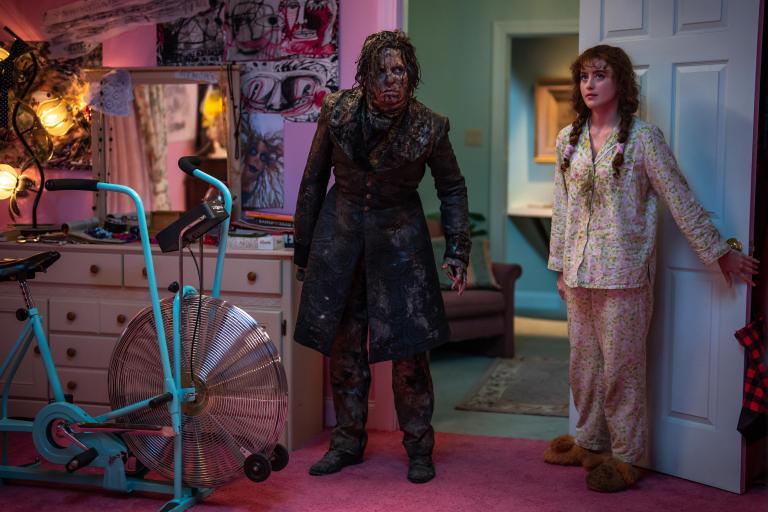
Lisa Frankenstein (2024) Marketed as a “coming-of-rage story,” a description that couldn’t be more accurate, Lisa Frankenstein explores teenage angst, desire, isolation, motherly loss, trauma, and love. It follows Lisa Swallows (Kathryn Newton), a reserved and misunderstood teen girl who spends her free time sewing and talking to the tombs at an abandoned cemetery. One night, a wish she makes brings back a corpse from the dead, and the two embark on a murderous journey.
“They say time heals all wounds. But that’s a lie, time is the wound. Takes you further and further away from that place when you were happy.”
